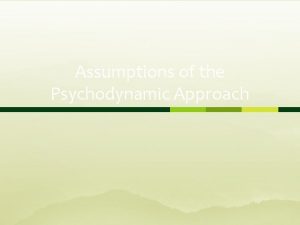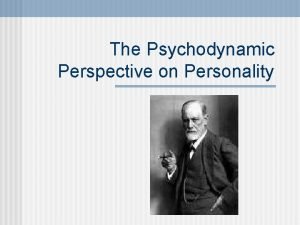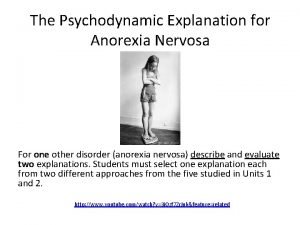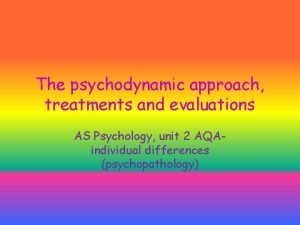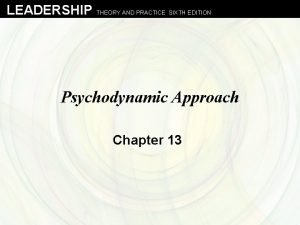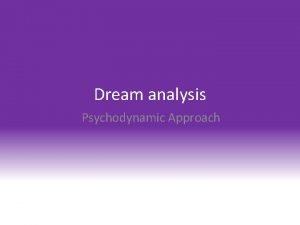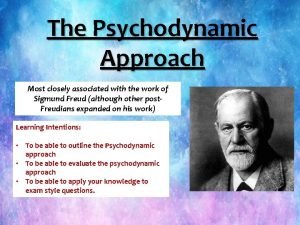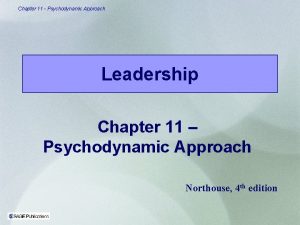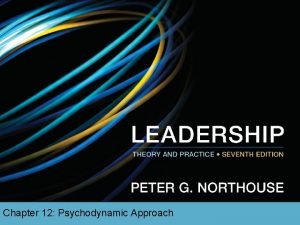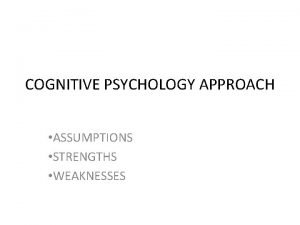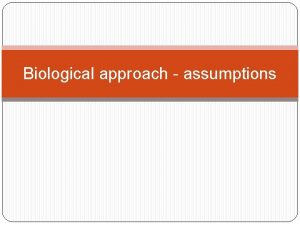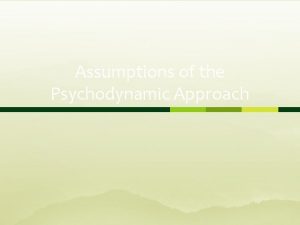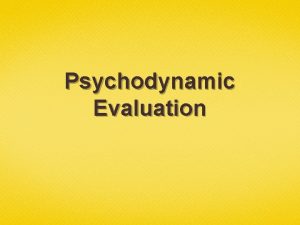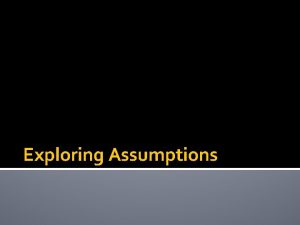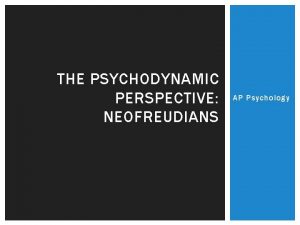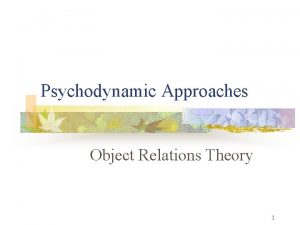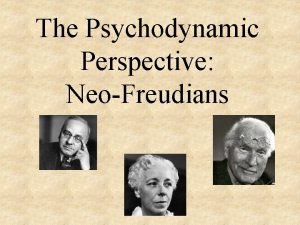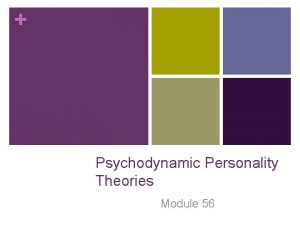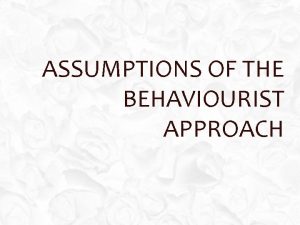Assumptions of the Psychodynamic Approach This topic Learn



















- Slides: 19

Assumptions of the Psychodynamic Approach

This topic ¥ Learn about 5 key assumptions of the psychodynamic approach ¥ Have a go at applying psychodynamic theories to real world situations

A bit of history. . . ¥ The psychodynamic approach is one of the earliest approaches in psychology, originating in the 19 th century. ¥ The main figure in psychodynamic theory is Sigmund Freud

Assumption 1: Behaviour is influenced by the unconscious mind ¥ We have an unconscious mind which influences our behaviour ¥ We are unaware of our unconscious ¥ Read the information on page 31. What are the characteristics of the unconscious mind?

Assumption 1: Behaviour is influenced by the unconscious mind ¥ Freudian slip You say something which accidentally reveals your unconscious desire. Can often be sexual or violent ¥ “Let’s get some eggs from the shop” becomes “Lets get some sex from the shop” ¥ “When I see him I will thank him” becomes “When I see him I will hit him” ¥ ¥ Can you think of an example of when this happened to you?


Assumption 1: Behaviour is influenced by the unconscious mind ¥ Other ways of accessing the unconscious Dream analysis ¥ Rorschach inkblot test ¥ Word association ¥ ¥ Have a go at word association ¥ Rorschach inkblot test

1

2

3

4

5

6

Assumption 2: Different levels of consciousness ¥ The mind is like an iceberg ¥ Conscious: what we are aware of ¥ Preconscious: what we could be conscious of if we turned our attention ¥ Unconscious: inaccessible

Assumption 3: The Tripartite Model of Personality ¥ We do not have one unified personality, but 3 different parts ¥ They pull us in different directions. ¥ “I really need to study, but I want to go to a party with my friends”. ¥ Read the information on page 44, and complete the task

Assumption 3: The Tripartite Model of Personality ¥ Video: it’s a bit old and VERY cheesy, but worth a watch! ¥ For the three scenarios, identify what the three parts of personality might want.

Assumption 4: Ego defence mechanisms ¥ How the ego protects itself from unconscious thoughts and feelings ¥ Can push a desire out of consciousness, or transfer it to something else. Repression ¥ Displacement ¥ Projection ¥ ¥ For the scenarios, what defence mechanism is being used?

Assumption 5: Early childhood experiences and relationships ¥ Events in childhood shape our adult personality ¥ Traumatic events can be repressed and cause stress later in life ¥ Relationships with parents set template for adult relationships ¥ Describe some ways that adult personality may be shaped by your childhood.

Assumption 5: Early childhood experiences and relationships ¥ Children go through 5 stages of psychosexual development ¥ Oral, Anal, Phallic, Latency and Genital ¥ Fixation can lead to problems in adulthood
 Assumption of psychodynamic theory
Assumption of psychodynamic theory Psychodynamic approach to personality
Psychodynamic approach to personality Psychodynamic
Psychodynamic Anorexia psychodynamic explanation
Anorexia psychodynamic explanation Psychosexual fixation
Psychosexual fixation Evaluation of the psychodynamic approach
Evaluation of the psychodynamic approach Psychodynamic approach to leadership
Psychodynamic approach to leadership Strengths of the psychodynamic approach
Strengths of the psychodynamic approach Psychodynamic perspective
Psychodynamic perspective Psychodynamic approach to leadership
Psychodynamic approach to leadership Psychodynamic approach to leadership
Psychodynamic approach to leadership Psychodynamic theory of schizophrenia
Psychodynamic theory of schizophrenia Facts about tactile learners
Facts about tactile learners Cognitive approach strengths and weaknesses
Cognitive approach strengths and weaknesses Assumptions of biological approach
Assumptions of biological approach General subject example
General subject example Research problem example for students
Research problem example for students Multiple approach avoidance conflict
Multiple approach avoidance conflict Deep learning approach and surface learning approach
Deep learning approach and surface learning approach A switched wan is normally implemented as a network
A switched wan is normally implemented as a network
